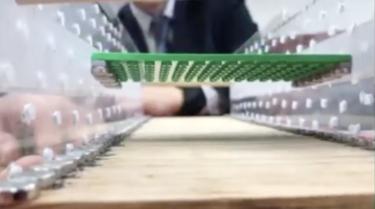- About
- Admissions
- Academics
- Athletics
- Student Life
« Back
Students Float Objects Magnetically Using the Force
January 11th, 2018

Still photo from video project by William Amory ’19, Joshua Bolma ’21, Austin Cook '20, Felikss Gavars ’21, Bin Jiang ’21, and Joshua Romanowski '20
Students in Patrick Bonis’s Physical Science class are having fun with project-based learning; this time, using the force. Some South Kent School students have learned to float a Lego piece through the air, and no, they are not Jedi trainees; they’re simply using the science of magnetic force.
Specifically, Bonis describes the process as “force from a distance to negate a contact force.” Tracks were created and materials were provided, but students were required to work together to harness the invisible force of magnetism properly to achieve the goal of floating and moving the Lego forward down a hand-built track.
“The first thing we did was separate the magnets and see which side would pull and which side would push,” said Austin Cook ’20. “After that, we glued each magnet and before we could put down the next magnet, we had to make sure that the first magnet was fully glued so they wouldn’t push against each other and they would stay in place. After that, we glued the magnets to the cart and we just made sure that the magnets would react differently so that it would do a push force instead of a pull force.”
Joshua Romanowski ’20 worked in a group with Cook and noted that the project was simple, but “ really cool. My favorite part was seeing it actually work.” Bonis added, “The boys are learning through doing!” The teacher also discussed the importance of hands-on learning, explaining that it is often difficult to retain lessons when there is a “flood” of information. “When we learn about Newton's Laws, we try to put them to practice. The way to fight boredom, and a stagnant class, is to have the students create the problem and show the solution. The information has to come in steps, the timeline is not short, and collaboration is key. It tests the students in a more practical sense, and allows them to see tangible results. Projects are a great way to build efficacy in a class setting!”
Although it may look like science fiction, Mr. Bonis is showing his classes that simple science can be truly amazing.
Check out the video below narrated by Cook. Other team members include Romanowski, William Amory ’19, Joshua Bolma ’21, Felikss Gavars ’21, and Bin Jiang ’21.












